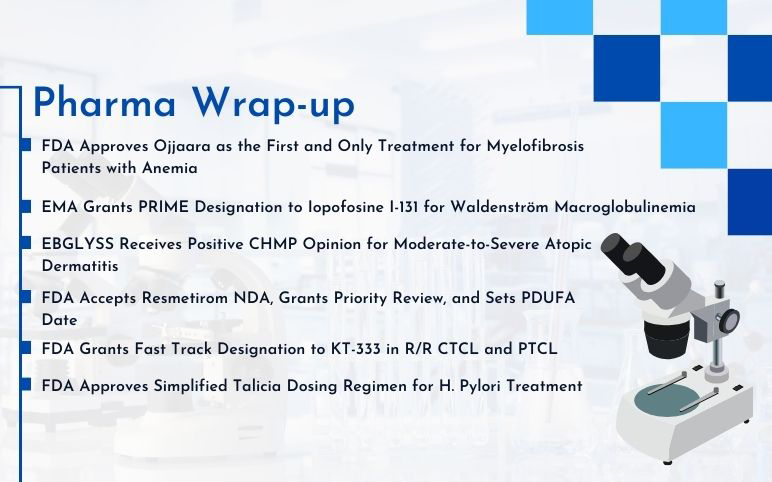
Jul 10, 2019
Myelofibrosis (MF) is a rare type of bone marrow cancer resulting in abnormal functioning of blood-forming cells and fibres. MF belongs to a group of disorders known as myeloproliferative disorders. This condition results in the widespread scarring of bone marrow leading to anaemia decreased count of platelets, and often an enlarged spleen. Other Myelofibrosis symptoms include easy bruising, extreme tiredness, excess sweating, and paining bones. The cause of Myelofibrosis is often associated with a mutation in the JAK2 gene in almost 50-60% of patients. This mutation results in blood cells to divide in excess even when the requirement is nil. Simulations have also shown that mutations in another gene called MPL, which in the end hampers the normal functioning of JAK2, can also result in Myelofibrosis.
Myelofibrosis, as stated above, is a rare disorder with an unknown incidence. However, according to the National Organization for Rare Disorders, the MF incidence is found to be approximately 1-1.5 per 100,000 people in the US, which is a misleading number due to the higher chances of underdiagnoses and underreported cases. On the other hand, in Northern European countries, the MF incidence was estimated to be 0.5 cases per 100,000 people. Primary Myelofibrosis can occur at any agehowever, the median age of MF diagnosis us 65, with equally affecting both males and females.
Myelofibrosis treatment depends on the type and stage of cancer. The only MF therapeutic cure currently available is hematopoietic stem cell transplantation (HSCT). Until recently, the Myelofibrosis therapeutic market had no drug that was FDA approved. Ruxolitinib, a lead drug developed by Jakafi, Incyte Corp, in collaboration with Novartis, is the only FDA approved treatment option for MF patients regardless of their JAK2 mutational status. Ruxolitinib is an orally administered agent taken twice on a daily basis. Other Myelofibrosis therapeutic approaches in the MF therapy market address the myeloproliferation (leukocytosis, thrombocytosis) and organomegaly (splenomegaly and hepatomegaly) associated with MF including chemotherapeutic agents such as melphalan, busulfan, cladribine, and hydroxyurea being the most common and effective agent in controlling higher leukocytes and platelets in MF patients. Chemotherapy can successfully control symptomatic splenomegaly (and/or hepatomegaly) and address extra-medullary hematopoiesis of the spleen/liver/lung/skin or other organs that cause symptoms. Hydroxyurea also helps in improving spleen discomfort and at times, taming anaemia if driven by splenic sequestration. Anaemia is prevalent in MF patients which Erythropoiesis-stimulating agents (ESA), such as Procrit, aransap) have been successful in improving in patients without elevated endogenous erythropoietin levels.
Occasionally corticosteroids given for short periods can be effective if the anaemia is due to an autoimmune hemolytic process. Chemotherapy can successfully control symptomatic splenomegaly (and/or hepatomegaly) and address extra-medullary hematopoiesis of the spleen/liver/lung/skin or other organs that cause symptoms. Radiotherapy can also be employed to address symptomatic splenomegaly refractory to medical management or in cases of EMH affecting the lung, peritoneum, or impinging on nerves. Patients with low/intermediate-1 risk MF by IPSS should either be followed closely for signs of disease progression or treated with conventional agents (thalidomide, lenalidomide, danazol, hydroxyurea) or ruxolitinib to address different disease features discussed above.
Article in PDF
There are many unmet needs in the field of Myelofibrosis Market. All of the MF therapies available lack approved curative treatments, accurate diagnostic tests, a little understanding of the disease pathogenesis, and biomarkers, among others. However, many pharmaceutical companies have started to work towards advancing the Myelofibrosis pipeline.
Article in PDF

